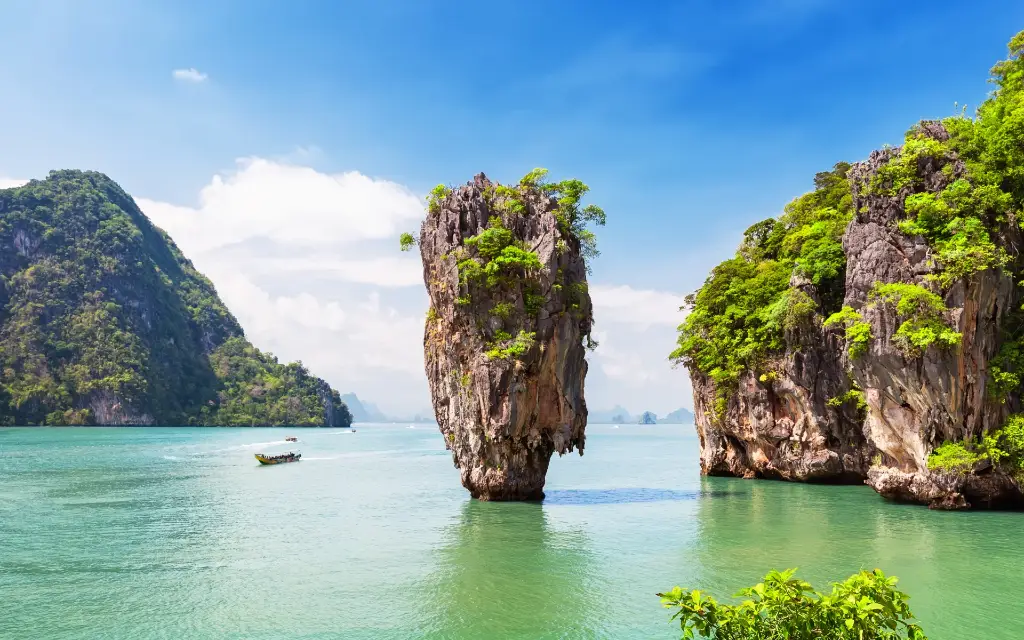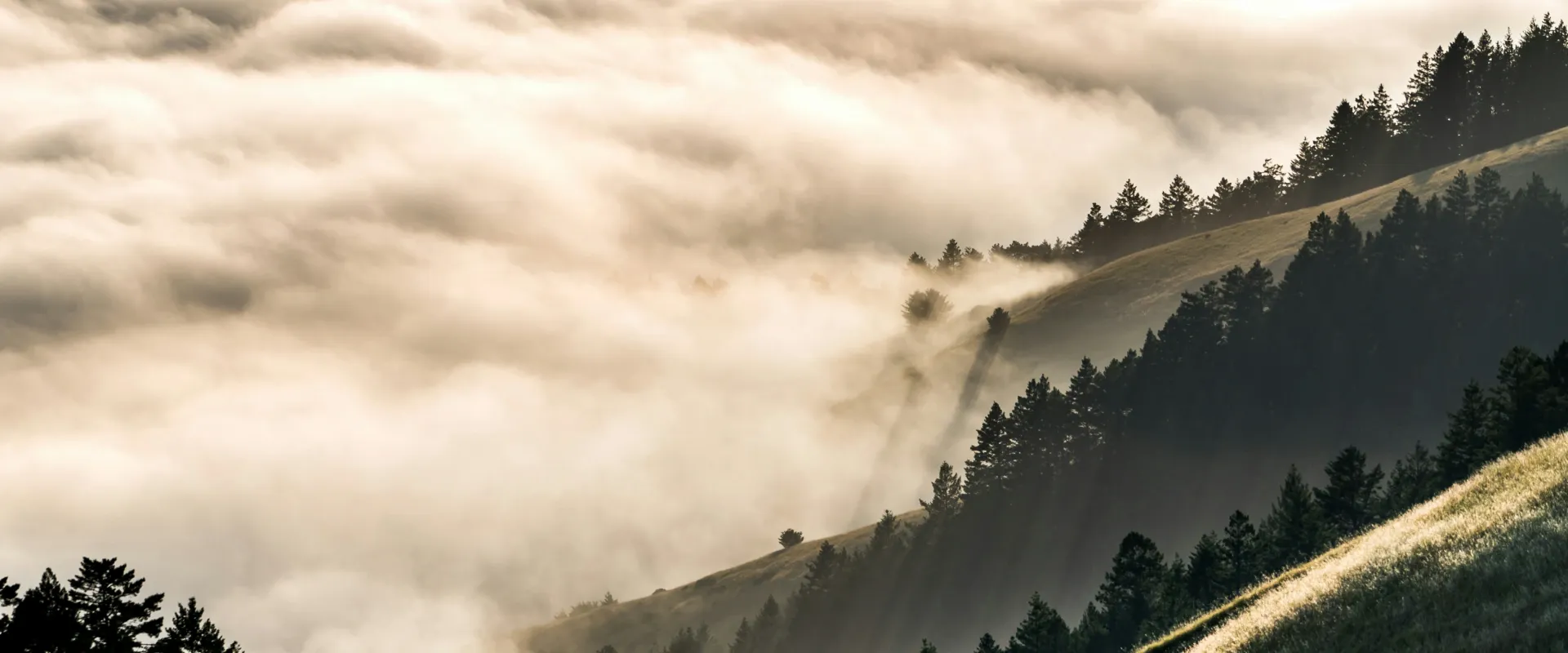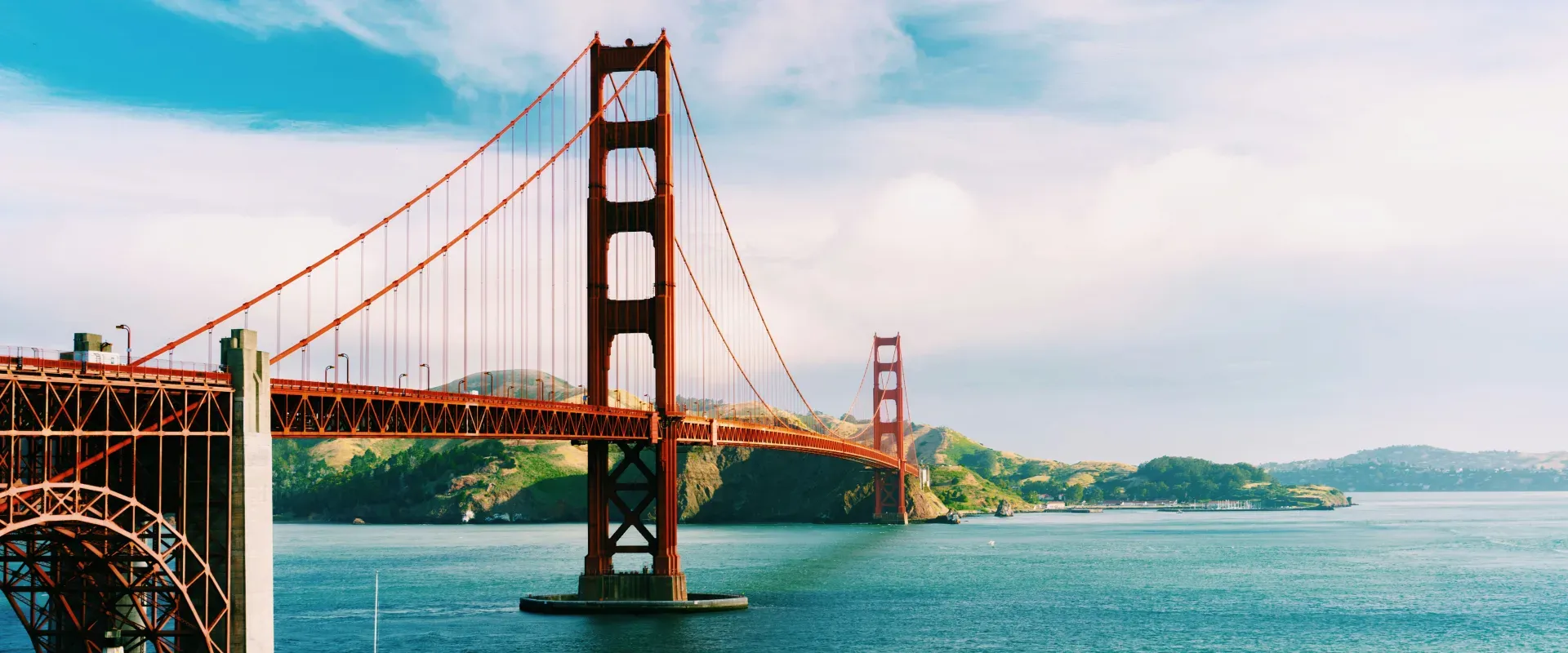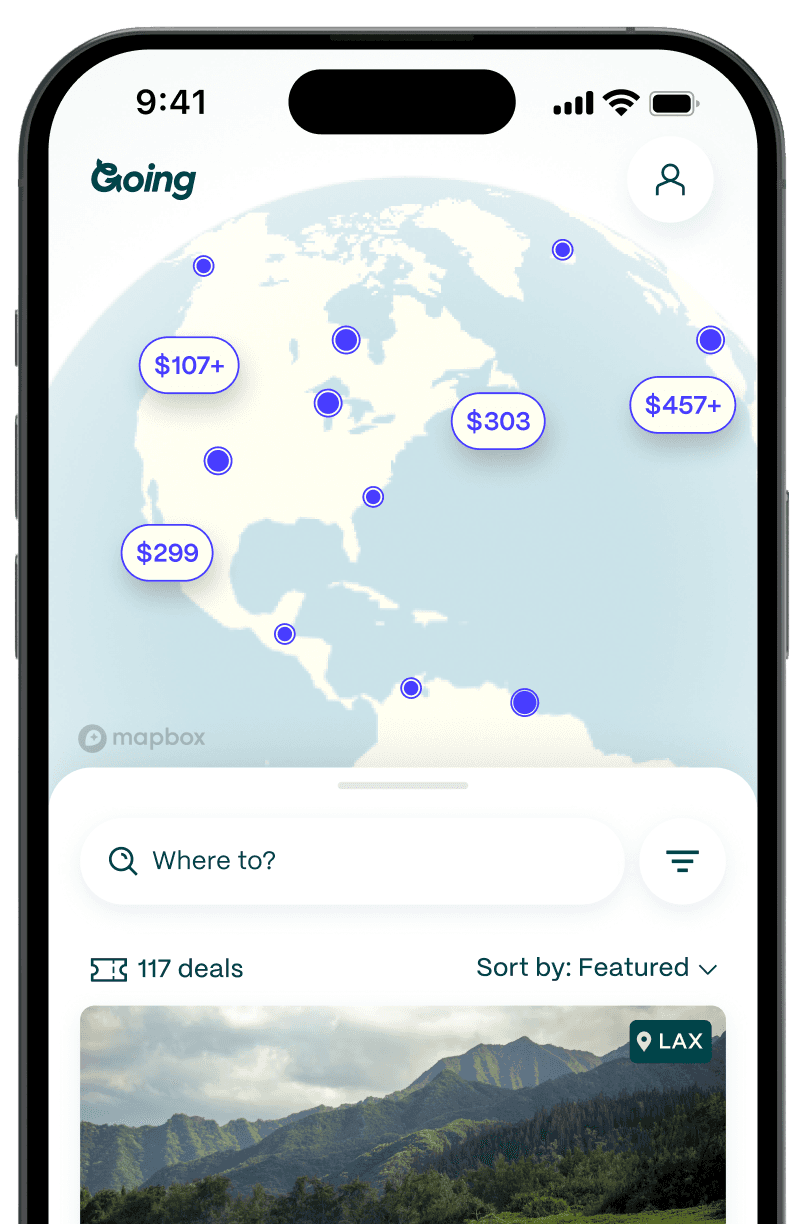
How to Plan a Trip to Thailand
Table of Contents
The Kingdom of Thailand truly has something for every traveler, whether you're seeking relaxation on pristine beaches, adventure in dense jungles, cultural immersion in vibrant cities, or tranquility amidst the mountains.
On a map, it’s a tall country, with fresh mountain air in the north and tropical islands in the south, and while it’s incredibly cheap by US standards and safe to get around, land transport isn’t particularly modern and can take a while to get from A to B. It’s also tricky to book local trains and buses online while out of the country, so here we outline good agencies and websites to use and what the best (or only) mode of domestic transport is. We also cover when to go, how to get there, and how to prepare for your trip to the ‘Land of Smiles.’
When to visit Thailand
Across the country, the high season is December to February—the ‘winter’ months that see Christmas and New Year’s celebrations from the West and the East soon after. Domestic travel is also very busy in April, with the Thai/Buddhist New Year Songkran celebrated in that month.
Bangkok

Bangkok’s rainy season stretches from April (the hottest month) to October, but unlike many of its neighboring islands, the storms are often short in length and over quickly. Grab a rainproof poncho, and do not let a storm stop you—the locals don’t.
Northern Thailand

Northern Thailand sees the most rainfall from July to October. The whole of the north, including Chiang Mai, Chiang Rai, and Pai, experiences ‘burning season’ from February to May, when waves of terrible air pollution cover the area. If you’re sensitive to air quality, avoid visiting during those months.
Southern Thailand

The southernmost reaches of Thailand stretch long and thin like a land bridge to Malaysia, with hundreds of islands dotted on both sides of the mainland. To the west is the Andaman Sea, which has a different climate to the Gulf of Thailand on the east. The air quality is always good, but humidity can be overwhelming, particularly during the rainy season.
On the Andaman side, Phuket experiences heavy rainfall in May and June, with sporadic showers in July and August. If you wish to avoid the rains, aim for after this. Some enjoy the rainfall, though, as it lowers the temperature and nature blooms, meaning July and August are a decent time to conquer the island’s hiking trails.
Off the eastern coast, the Gulf of Thailand sees the heaviest rain in October and November, so visit prior to that. An off-season visit to the Samui archipelago, including luxurious Koh Samui, hippie Koh Phangan, and the smaller, diving haven Koh Tao, means fewer crowds and lower prices but occasional flash floods.
How to get to Thailand
Bangkok Suvarnabhumi Airport
Currently, the only direct flight from North America to Bangkok leaves from Vancouver four days a week, and it is run by Air Canada. A number of Asian airlines operate routes from LAX to Bangkok with one stop along the way; Korean Air with a transfer in Seoul; Philippine Airlines transit in Manila; Singapore Air with a change in Singapore. Alternatively, airlines like Air France, Air India, Emirates, Lufthansa, and Turkish serve the east coast of the US with one flight change in Europe, India, or the Middle East. As the capital city, Bangkok is Thailand’s most popular point of entry, but it’s not the only way—if you plan to travel in the north, you can start in Chiang Mai, or in the south, you can head to Phuket, as we’ll detail below. Bangkok has the most flight details, though; the average Going price is $592, and the lowest price we’ve found is $356 from LAX, while typical prices range from $1,200 to $1,400.
Phuket International Airport
Phuket is Thailand’s second-largest transport hub and largest island, home to endless resorts thanks to the handy international flights landing all day. There are no direct flights to the USA from Phuket, but again, there are a number of East Asian fleets linking Phuket to LAX; Cathay Pacific stops in Hong Kong before heading onwards to LA, while China Eastern Airlines does this route with a stop in Shanghai and are the cheaper option. To head to Phuket from the east coast—Air India, Emirates, Etihad, and Qatar Airways link NYC to Phuket—you can usually find some good cheap deals with Qatar Airways, but note Doha is a predominantly dry city, so don’t expect beers to be readily available during your layover.
Chiang Mai International Airport
Often referred to as Thailand’s second city, Chiang Mai has a solid range of direct flights to Asian capital cities, so if you’re heading to the north of Thailand for your vacation, it is possible to bypass Bangkok and arrive at this sweet and stress-free smaller airport by transiting in Seoul, Singapore or Shanghai—pretty straightforward if you’re leaving the US via LAX.
Before you go
3-11 months out: This is the best time to find great deals on flights as it’s within what we call the Goldilocks Window (not too far in advance, not too late).
3-6 months out: Book your hotels, guest houses, or hostels if you want the best spots.
2-3 months out: Consult your health care professional to see if vaccines are needed. Typhoid and tetanus are always a good idea, and if you’ve had Dengue fever once before, you may want to look into getting the vaccine for that (you can only receive the vaccine if you’ve had Dengue previously) as it is on the rise across SE Asia. Apply for your international driving license if you intend to drive in Thailand; note if you hold a car license, this will not cover you for motorbike driving in Thailand, where the two licenses are considered separate.
1 month out: Americans don’t need a visa for a short vacation in Thailand, but if you’re backpacking and want to have the option to stay a while, apply for the 60-day-long tourist visa a month or so before your trip. This is also an excellent time to book any train tickets you need, particularly the popular Bangkok to Chiang Mai train, which sells out in a few weeks in advance.
2-3 weeks out: Book your trips to ethical elephant sanctuaries (like Elephant Nature Park) or tickets to see the best Muay Thai in the country—and indeed the world—at Rajadamnern Stadium in Bangkok. If you’re big on gastronomy, it’s a good idea to book into Bangkok, Chiang Mai, and Phuket’s Michelin-starred or recommended restaurants a few weeks in advance, too.
5-7 days out: Download the apps Bolt and Grab, which are the local version of Uber, used for taxis and food delivery services. Some ferry services, such as the speed boats from Koh Samui to Koh Phangan or Koh Tao, are worth booking a week or so before your trip. Also, make sure you have purchased your international travel insurance.
How long to spend in Thailand
Of course, given the choice and unlimited funds and vacation days, most of us would say the more time you have in a place, the better, but you can still see a bit of Thailand on a shorter trip. Here are some recommendations for what you can do with various lengths of time.
5-7 days
With 5-7 days, your best bet is to stay in Bangkok for 2 days to acclimate, sink into the excellent spa and wellness scene, visit the incredible temples Wat Po and Wat Arun, and visit the Royal Palace. Use your last 3-4 days for a beach stint at Railay Beach (near Krabi Airport), Koh Samui, or Phuket—selecting somewhere with an easily accessible airport.

8-10 days
On a slightly longer stay, you could spend a few days in Bangkok, adding the art galleries or a street food tour to the itinerary suggestions above. Then, visit an island or two that’s less readily accessible and, therefore, less crowded, like Koh Chang and its smaller neighbor, Koh Mak. If beaches are not for you, head to Khao Sok National Park to lap its lakes and take in the mind-blowing nature.
11 - 14 days
After a couple of days in Bangkok, head north to Chiang Mai on the famous night train. Stay in the ‘capital in the north’ for a few nights taking in its ancient temples, jazz bars, and yoga studios. From Chiang Mai, you can get up to Chiang Rai for a couple of nights and visit the Golden Triangle, where the borders of Laos, Myanmar, and Thailand all meet, catching the Blue Temple and White Temple on the way back into town. Or if you’re down for tranquil vibes head northwest to Pai, where pretty cafes stare out at rolling rice paddies, and hot springs are never too far away.
15 - 21 days
If you’re staying for 2 or 3 weeks you can visit the north and south, plotting a triangle between Bangkok, Chiang Mai in the north, and Phuket or Krabi in the south, then back to Bangkok. In Chiang Mai visit the Sticky Waterfalls and the temples around the old city by day and hop around the jazz bars by night. Down in Krabi make sure to spend a week lounging on Railay Beach (near Krabi Airport) before your trip ends.
Deciding which cities and regions to visit in Thailand
Bangkok is well placed in the center of the country, specifically chosen for its handy location when the kings of the country moved the capital city there in 1782. Everywhere in Thailand is reachable from Bangkok. It’s a safe, vibrant city but very humid and hot most of the year, so don’t rush around it.
The north of Thailand has cooler climates and less humidity, being a mountainous stretch of the country. Chiang Mai, Chiang Rai, and Pai are tourist favorites and great destinations for history and nature lovers but are far flung from the beach.
The south of Thailand has over 1,400 islands, but you only need to decide between the 50 that are inhabited. Phuket is the largest and a busy tourism hub. Koh Samui also has its own airport and is a luxury wellness destination. In the same little archipelago in the Gulf of Thailand, Koh Phangan is one of the islands known for Full Moon Parties (or yoga retreats, depending on which side you head to), and Koh Tao is the diving capital.
Bangkok

Bangkok is a very busy capital, but even the city-phobic will be lured in by incredible food and things to do. It takes two days to acclimatize, and you might want to sink into the excellent spa and wellness scene, check out the cool art galleries, take a street food tour, visit the incredible temples Wat Po and Wat Arun, and check out the Royal Palace.
Phuket

Thailand’s biggest island has a wide range of beach resorts, from family-friendly or cheap and cheerful to extremely luxurious and bijou. Phuket's old town on the east of the island is extremely elegant and has beautiful Sino-Portuguese architecture and a fascinating history. Patong on the west side is about as wild and ‘Spring Break’ vibes as Thailand gets. You can curate your own experiences here, making it as chill or crazy as you’re up for.
Koh Phi Phi

These tiny islands sit in the bay between Phuket and Krabi and have gorgeous views and famous beaches. But it’s a backpacker hotspot, so don’t expect any serenity here at all. Some people opt to visit on a day trip from Phuket, which is a bit exhausting but absolutely doable.
Khao Sok National Park

One of Thailand’s highlights, nature lovers will dig this sprawling park in southern Thailand with its pristine lakes shrouded by ancient rainforests as far as the eye can see. There are myriad activities to get involved with amidst its breathtaking beauty. Trek through ancient rainforests teeming with wildlife, kayak along the deep green lakes, or just kick back and relax on scenic boat tours,
Krabi

This coastal gem in southern Thailand is known for its sandy beaches, stunning limestone cliffs, and azure waters. Visitors flock to iconic destinations like Railay Beach for rock climbing and snorkeling, while the nearby Phi Phi Islands also beckon with their vibrant marine life and beach bars.
Koh Samui

One of the country's hotspots for luxury and wellness, Samui (Thailand’s second-largest island) is home to some absolutely jaw-dropping accommodations if you’re willing to stretch your budget a little, from beachside hotels and villas to jungle digital detox retreats.
Koh Phangan

Samui’s neighbor is an island of two halves. The east is known for its full moon parties and is pretty wild, a big hit with young holidaymakers and backpackers. The west is the yoga and spirituality center of the south—expect singing mantras around a bonfire. Whichever side you go for, the beaches are fantastic.
Chiang Mai
 Thailand’s ‘capital in the north’ is known for being a wellness-conscious destination, with meditation retreats (run by local monks), vegan restaurants, and yoga studios on tap. It’s also a university city and has a solid live music scene and nightlife—if searching for inner zen isn’t your thing. Chiang Mai sits between mountains, waterfalls, and national parks, so it is a great destination for nature fans, too.
Thailand’s ‘capital in the north’ is known for being a wellness-conscious destination, with meditation retreats (run by local monks), vegan restaurants, and yoga studios on tap. It’s also a university city and has a solid live music scene and nightlife—if searching for inner zen isn’t your thing. Chiang Mai sits between mountains, waterfalls, and national parks, so it is a great destination for nature fans, too.
Pai

This idyllic small town is a backpacker and hippy favorite a few hours northwest of Chiang Mai, up in the mountains. Vegan cafes dot the rice paddy fields, while the high street has a brilliant food market every night. It’s not all hot springs and zen, though. You’ll likely hear of the under-the-radar forest parties—expect day-glo.
Chiang Rai

Famously the nearest city to the Golden Triangle, where the borders of Laos, Myanmar, and Thailand all meet, Chiang Rai is a pretty sleepy city, but highlights like the Blue Temple and White Temple are unmissable.
How to get around in Thailand
Domestic flights are undeniably the quickest and easiest way to get around Thailand, as the train network and bus routes are pretty slow and lack the hyper-modern infrastructure of nearby East Asian countries. You can fly from Bangkok to every corner of Thailand, with Bangkok Airways having ownership of a lot of the handy small airports like Koh Samui and Trat (for Koh Chang), and Thai AirAsia linking all the popular destinations like Bangkok, Phuket, Krabi, and Chiang Mai for example. There are two airports in Bangkok; domestic flights usually use the smaller Bangkok Don Muang so make sure to check the airport name when you book.
Having said that, if you’re not in a rush, it is really easy, cheap, fun, and scenic to get around flight-free. Thailand’s trains are not very fast, so driving or taking the bus takes the same time on many routes, but if you’re a train lover, you’ll love them. Large seats or bunks get you around the country for $10-$20 a ride generally. Long-distance trains on the Northern, Northeastern, and Southern lines now leave from the new terminal station in Bangkok; when buying your tickets to leave from Bangkok, you need to enter the “Krung Thep Aphiwat” station. If you’re buying tickets while in Thailand (you need a Thai number), you can use D Ticket, the government’s platform. If you want to buy them in advance 12goAsia is a brilliant and reliable company that will grab your tickets for trains (or buses, too), and you can collect them from their office or have them sent to your Bangkok hotel.

Thailand’s bus network is very extensive. Green Bus runs an excellent service and has VIP seats on most routes, where for a few dollars more, you can have an extra-large recliner seat. A small fleet of minivans run by a company called Prempracha whips between Chiang Mai and Pai and Mae Hong Son. The easiest thing to do is use 12GoAsia to book bus tickets for you if you’re out of the country.
Most ferries to Thailand’s islands can be booked on the spot, but there are a couple that are worth booking in advance; the ‘speed boats’ leaving Koh Samui for Koh Phangan or Koh Tao get very busy during peak season and often sell out, particularly around the full moon. If you’re heading to either of those islands, buy your tickets from Bookaway; the boats run by Lomprayah are reliable and timely, but there are a number of companies on those routes available to select on Bookaway.
Dos and don’ts in Thailand
Do pack a shawl and long shorts; your shoulders and knees must be covered to visit temples.
Do pack DEET mosquito repellent.
Don’t expect to pay for things with debit or credit cards—outside Bangkok, cash is king.
Don’t walk around in your beachwear through towns and high streets; it’s considered rude.
Don’t get upset with slow service. Things are slow-paced and relaxed across the Kingdom.
Things you need to book in advance in Thailand
It’s a good idea to book any train tickets you need—particularly the popular Bangkok to Chiang Mai train, which sells out—a few weeks in advance. Some ferry services, such as the speed boats from Koh Samui to Koh Phangan or Koh Tao, are worth booking a week or so before your trip.
As for activities, the two you should book in advance are a visit to an ethical elephant sanctuary (like Elephant Nature Park) or to see Muay Thai at Rajadamnern Stadium in Bangkok. And of course, if you’re a foodie, it’s a good idea to book into the most popular restaurants in Bangkok, Chiang Mai, and Phuket a few weeks in advance.
How to budget and manage your money for Thailand
Thailand is very cheap compared to Europe, East Asia, and even Central and South America. Vietnam and Laos next door are a little cheaper, perhaps, but Thailand is otherwise a very budget-friendly destination, which makes luxurious add-ons very achievable.
Average cost of hotels
For a budget stay, expect lows of $15 per night for a double room. Nice mid-range hotels come in at $40-50 per night for a double. You can bag a high-end luxury stay for $100-$400 per night, depending on the day of the week and season.
Average cost of sit-down meal
Depending on where you are in the country (Bangkok can be higher), meals can be as low as $5 for three courses in roadside dining spots. Medium range and more westernized (or vegan etc) can be $15-$30 a meal, while Michelin-starred restaurants are around $100 without wine pairing.

Average cost of street food
You’re looking at $1 for a plate of pad thai to go, while some snacks are 50 cents.
Average cost of transport
A long-distance (12 hr+) train across the country will run around $15, while the average domestic flight from Chiang Mai to Phuket will be about $50 each way. The ferry from Koh Samui to Koh Phangan costs about $20.
How to manage your money
ATMs
Cash is still king in Thailand, but every ATM, regardless of the bank or your bank card, charges around $4 for each withdrawal. Take out larger denominations each time, as the charge is flat.
Credit cards
You can use credit cards at most mid-range and high-end hotels, particularly in big cities. Bangkok's mid- and high-end restaurants and malls accept credit cards. Once you’re on the islands or in small towns, cards are less accepted. American Express is rarely accepted.
Useful websites and apps for Thailand
Frequently asked questions about planning a trip to Thailand
Do US citizens need a visa to visit Thailand?
How long can a US citizen stay in Thailand?
How expensive is Thailand?
What vaccines are recommended for Thailand?
Do US citizens need an international driver's license to drive in Thailand?
Is Thailand safe for solo female travelers?
Is Thailand LGBTQI+ friendly?
Last updated March 21, 2024
Articles you might like
View All
Best Day Trips from San Francisco: 25 Trips You’ll Actually Want to Take (2026)
Jan 6, 2026
12 min read

30 Free Things To Do In San Francisco That People Keep Recommending
Jan 6, 2026
10 min read

Marrakesh: The North African City Where Storytelling Is an Art
Jan 5, 2026
5 min read






